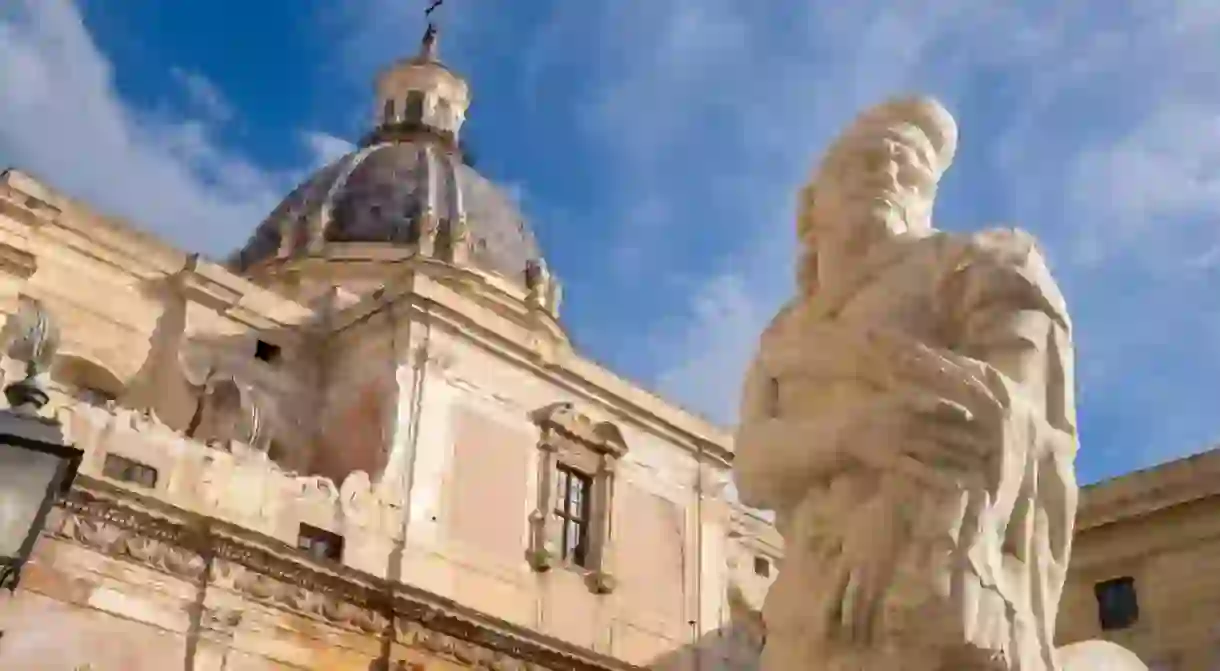The Most Impressive Buildings in Sicily, Italy

From ancient Greek temples and theatres to baroque churches, we think these are the most impressive buildings on Sicily.
Keen to explore Sicily’s architecture? Book Culture Trip’s 10-day adventure where you’ll be guided through the Italian island’s ancient towns by our Local Insider.
In the eighth and ninth centuries BCE, southern coastal Italy was colonised by the Greeks. Calling the region Magna Graecia, Latin for Greater Greece, the new rulers constructed enormous temples and theatres, many of which still stand all over southern Italy and Sicily.
Temple of Segesta
Historical Landmark

Segesta, a hilltop town in western Sicily, not far from Trapani, is home to a Doric Greek temple thought to have been constructed in the fourth century BCE. It’s in remarkable condition – and because a roof wasn’t added, historians now think that it was never completed. Besides which, there are no traces of the usual decorations found in other temples of this era.
Temple of Concordia, Agrigento
Historical Landmark

The Valley of the Temples in Southern Sicily, near the city of Agrigento, is truly an archaeological wonder. The Temple of Concordia is the largest and best-preserved Doric temple in Sicily and generally accepted as one of the best-preserved Greek temples in the world. Concordia was the Roman goddess of harmony, and this temple dedicated to her was constructed in 420BCE.
Ancient Theatre of Taormina
Cathedral, Theater

The dramatic views are just the beginning of the astounding Greek theatre in Taormina. Perched high above the sea in the far corner of the town, this centuries-old theatre is still used today for film screenings and live concerts.
Palermo Cathedral
Cathedral, Church

Built primarily in the 12th century, the main cathedral in Palermo is a historical and architectural mishmash, much like the city it represents. A prime example of the Arab-Norman style and protected by Unesco, it features elements of Western, Byzantine and Islamic cultures. The exterior is gothic in style, and, inside, you’ll find the Cathedral Treasury, with jewels and garments once worn by Sicily’s former kings and queens.
Massimo Theatre, Palermo
Theater

Teatro Massimo is the largest theatre in Italy. Built in the late 1800s, it is still renowned for its perfect acoustics. The neoclassical design was inspired by the great Greek temples on Sicily. You might recognise the interior, which was used to film the final scenes of The Godfather III.
Mirto Palace
Cathedral, Museum

The Palazzo Mirto in the city of Palermo was the home of the aristocratic Filangeri family for almost four centuries. Today, it is a museum, where you can visit the 21 lavish rooms filled with extravagant art and lush furnishings. The palace was once an Arab fortress as well. You will find this grand former residence in the Kalsa neighbourhood.
Cathedral of San Giorgio, Modica
Cathedral, Church

This baroque church in the town known for its unique chocolate commands your attention. Rebuilt after devastating earthquakes in the Middle Ages, the current structure was completed in the 18th century. The impressive church is a flight of 250 wide steps from the main piazza. Inside, you can find paintings and sculptures celebrating Saint George and a meridian sundial on the floor of the church.
Cathedral of St Nicholas, Noto
Cathedral, Church

The cathedral in the town of Noto is another example of Sicilian baroque architecture that is recognized and protected as a Unesco World Heritage site. Built in the golden-toned sandstone that is characteristic of the region in Southeastern Sicily, the bold curves and ornate decorations glow in the light. In 1996, a main section of the church collapsed, and renovations took 11 years to complete.
Villa Romana del Casale
Historical Landmark

A few thousand years ago, this was the home of a wealthy Roman ruler, who built a mansion to display his power and wealth. Today, the Villa Romana del Casale still retains the most extensive collection of Roman-era mosaics in the world, including the very famous girls in red bikinis.
Archaeological Park of Neapolis
Museum, Park, Ruins, Theater

Syracuse (Siracusa) is home to a wealth of ancient treasures. The Archaeological Park of Neapolis holds some highlights, including ruins and the Archaeological Museum of Syracuse. The Latomia del Paradiso is now a citrus grove, and the Ear of Dionysius is famous for its acoustic. There are two ancient theatres to visit here – the Roman amphitheatre, which dates back to the first century, and the Greek theatre, which dates back to the fifth century BCE. Both are still used today for summer performances.
Zisa Palace Palermo
Museum

This Moorish-style castle lies on the western edge of the city of Palermo. The name Zisa comes from the Arabic phrase “al-Azīz” – which translates as “splendid” – and is inscribed at the palace’s entrance. It was once the summer residence of the Norman king Guglielmo I, who enjoyed the unique architecture that kept the palace cool in spite of the scorching Sicilian sun. After years of neglect, it is now a museum, where visitors can seek a cool respite.
Cefalù Cathedral
Cathedral, Church

The cathedral in the seaside town of Cefalù is part of the protected Norman-Arab collection. It features Northern European Romanesque architecture, which is a different style than the others. Inside, are glittering gold mosaics and beautiful Byzantine-style cloisters.













